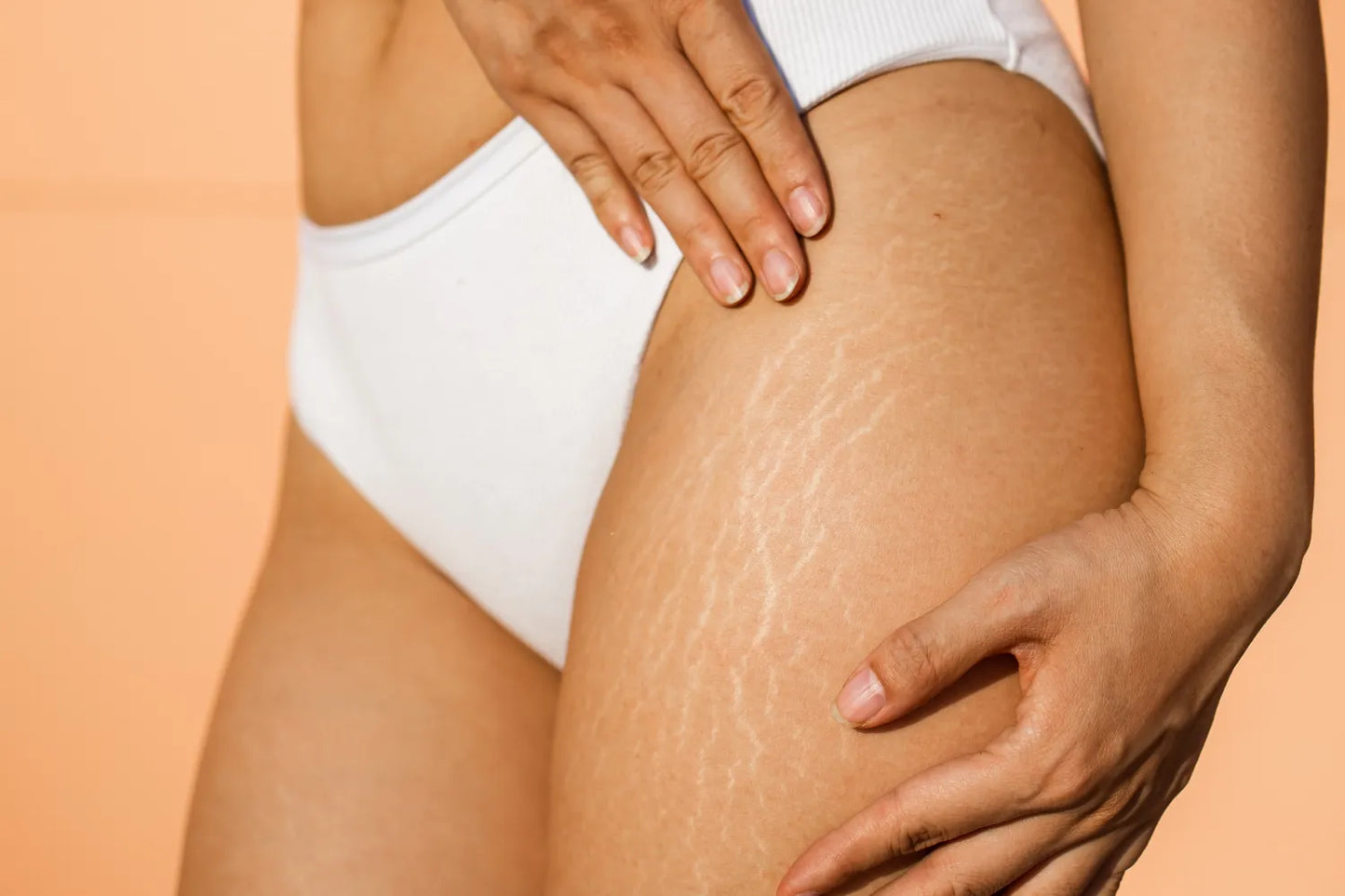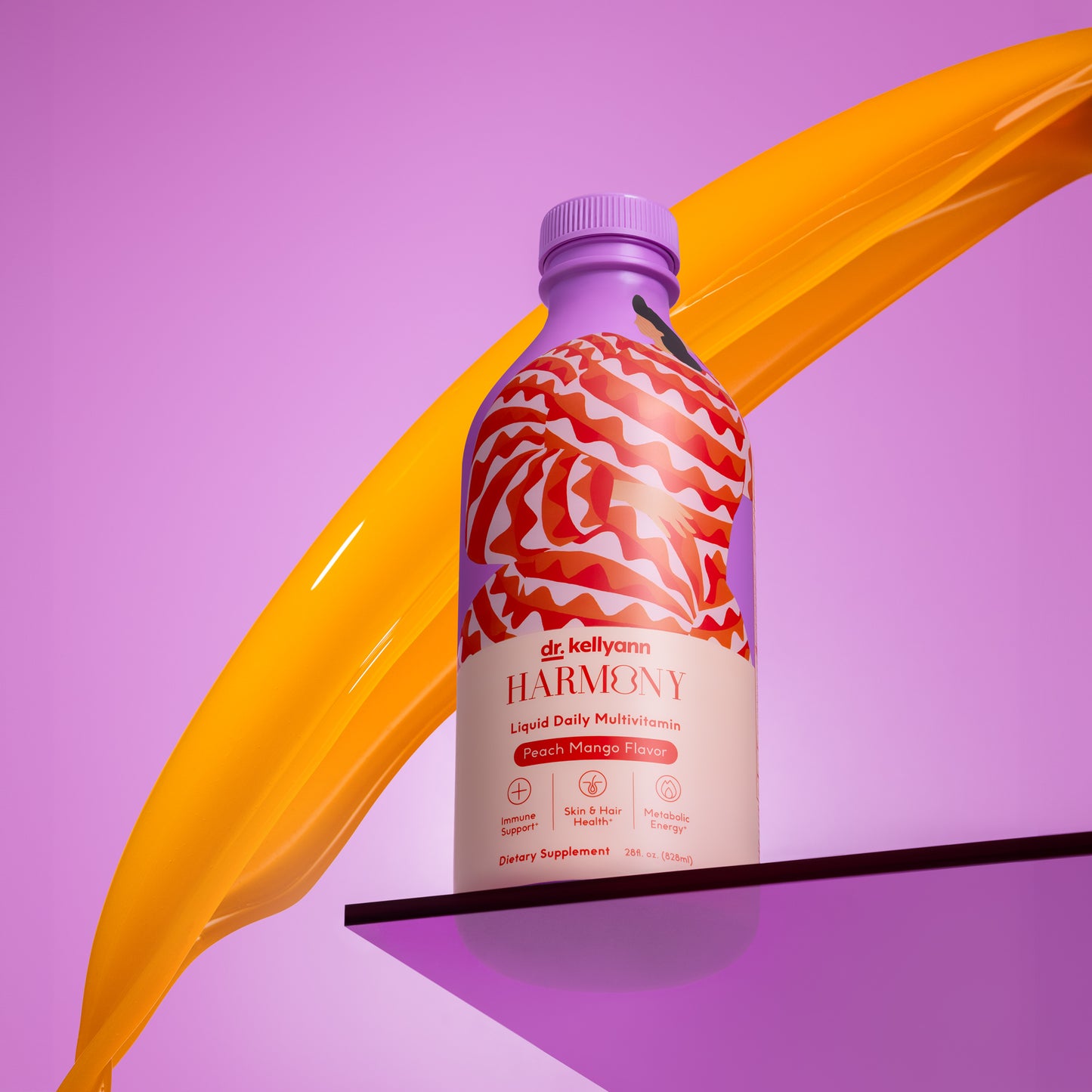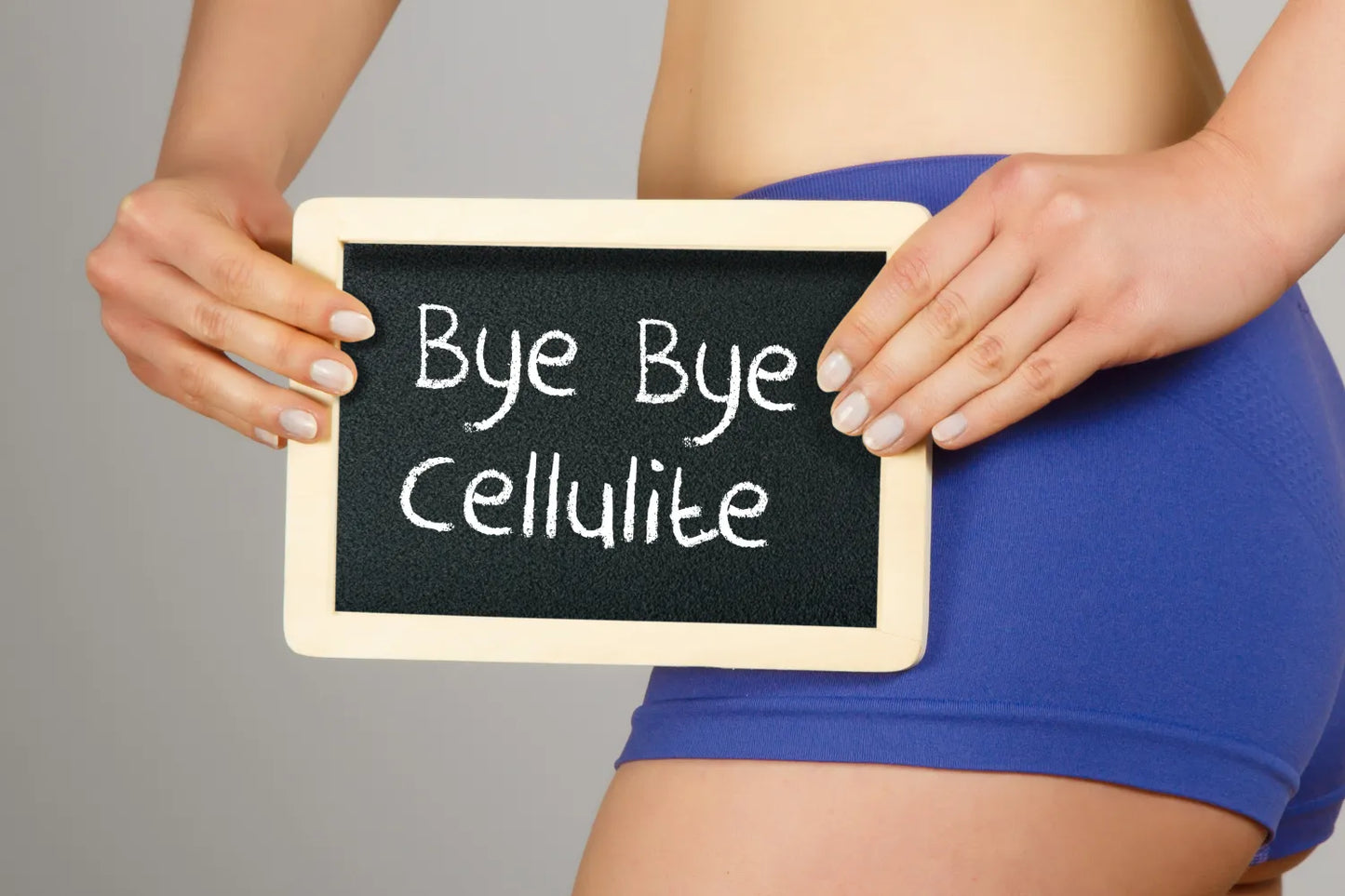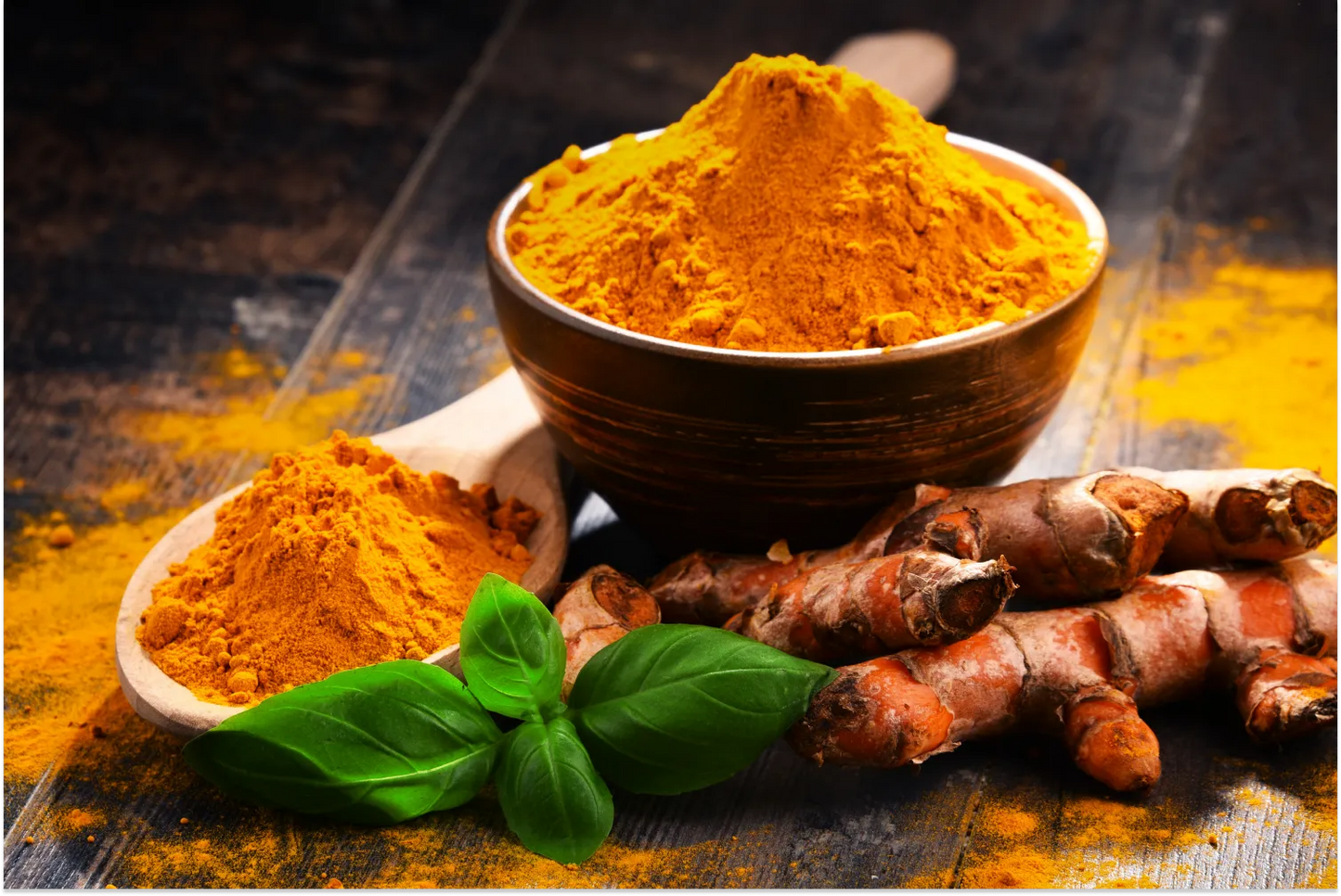
Cellulite vs. Stretch Marks: What's the Difference?
We've all heard of cellulite and stretch marks, and chances are, we've encountered them on our bodies. These skin phenomena are incredibly common, affecting the majority of us at some point in our lives. However, despite how common they are, there's a lot of misunderstanding and stigma surrounding them.
Together, we'll delve into what cellulite and stretch marks really are, debunk some common myths, and explore some ways you can support your skin's health.
What Is Cellulite?
Imagine the dimpled surface of a golf ball, the skin of an orange, or the texture of cottage cheese — that's what cellulite often looks like.
Cellulite is more common than you might think. Despite the societal stigma and countless myths surrounding it, cellulite is completely natural. In fact, it affects up to 90 percent of women at some point in their lives due to factors such as hormones, genetics, and lifestyle. Yes, you read that right — almost all women live with cellulite!
What Are Stretch Marks?
Stretch marks, on the other hand, are those thin, wavy, sometimes silvery lines that often appear during periods of rapid growth or change in our bodies. This includes times like puberty, pregnancy, or significant weight gain or loss. They might also appear during periods of rapid muscle growth, such as in bodybuilding.
They start off as reddish or purplish lines and gradually fade to a lighter color over time. Just like cellulite, stretch marks are a completely natural part of life and are extremely common.
Cellulite vs. Stretch Marks
While cellulite and stretch marks are different skin phenomena, they do share some similarities. Both are common and completely natural skin changes that can occur in both men and women, although both of them are more common in women.
However, they differ in their appearance and causes. Cellulite is caused by the way fat cells push against the skin's connective tissue. On the other hand, what you're seeing with stretch marks are actually small tears in the dermis, the middle layer of your skin. When the skin stretches faster than it can accommodate, it results in these characteristic streaks or stripes.
What Causes Cellulite and Stretch Marks?
Cellulite and stretch marks both are part of our body's natural response to change. Let's explore some common factors behind these skin woes.
Cellulite
Cellulite can be influenced by several factors, including:
- Hormones: Hormonal changes, particularly those involving estrogen, can contribute to the development of cellulite.
- Genetics: Your genetic makeup determines your sex, race, metabolic rate, and distribution of fat, which can influence your susceptibility to cellulite.
- Age: As we age, our skin loses elasticity, which can make cellulite more visible.
- Diet: Consuming a diet high in fat, carbohydrates, and salt with little fiber can contribute to the development of cellulite.
- Sedentary lifestyle: Lack of physical activity can exacerbate the appearance of cellulite.
- Tight clothing: Wearing tight clothing can limit blood flow and contribute to the formation of cellulite.
Stretch Marks
Stretch marks can also be caused by a variety of factors, including:
- Pregnancy: The skin stretches significantly during pregnancy, which can lead to stretch marks, particularly in the later stages.
- Puberty: Rapid growth during puberty can lead to stretch marks as the skin struggles to keep up with the body's growth rate.
- Rapid weight gain/loss: Quick changes in body size can cause the skin to stretch or shrink rapidly, leading to stretch marks.
- Muscle growth: Rapid muscle growth, as seen in bodybuilders, can also lead to stretch marks.
- Corticosteroid use: Long-term use of corticosteroid creams and lotions can decrease levels of collagen in the skin, leading to stretch marks.
Can You Prevent Cellulite and Stretch Marks?
We've all heard the saying, "Prevention is better than cure." While this may not always be possible with factors like genetics and hormonal changes, there are certainly natural, holistic ways to support your skin's health and maintain its elasticity.
Keeping your body well-hydrated, following a nutrient-rich diet, staying active, and taking care of your skin can all play a part in this. Plus, these actions not only support your skin but your overall health as well.
How Are Cellulite and Stretch Marks Treated?
Whether you’re dealing with cellulite or stretch marks, it's important to remember that both are completely natural. They're part of life and the changes our bodies go through. However, if you're looking for ways to support your skin's health and fade the appearance of these skin woes, there are several options you can consider.
Non-Invasive Treatment Options
Supporting your skin's health doesn't always require invasive procedures. In fact, many natural and non-invasive strategies can reduce the appearance of cellulite and stretch marks.
For instance, consuming foods rich in antioxidants, vitamins, and minerals can do wonders for your skin. Consider incorporating foods like bone broth, berries, leafy greens, and fatty fish into your diet. These superfoods are packed with nutrients that can help maintain your skin's health and vibrancy.
Hydration also plays an important role in maintaining your skin's texture and appearance. Drinking plenty of water throughout the day can help keep your skin hydrated and supple. If you have a hard time getting enough water, try adding some flavor!
Taking collagen supplements can also provide your skin with necessary support from the inside out. This can potentially reduce the appearance of cellulite and stretch marks, making your skin look more youthful and firm.
Regular physical activity is another way you can maintain a healthy weight and support skin elasticity. Whether you prefer yoga, jogging, or weightlifting, it's important to find a physical activity you enjoy and make it a part of your daily routine.
Finally, regular exfoliation and moisturizing can help maintain your skin's health. Look for products that contain skin-supporting ingredients like retinol, vitamin C, and hyaluronic acid.
Medical Procedures
If you're considering more intensive treatments, there are several medical procedures that can address cellulite and stretch marks.
These include:
- Red light therapy: This is a non-invasive treatment that uses low-level red light to stimulate collagen production and improve skin elasticity.
- Microdermabrasion: This is a procedure that exfoliates the skin's surface, which can help reduce the appearance of stretch marks.
- Radiofrequency therapy: This is a treatment that uses heat to stimulate collagen production.
- Cryolipolysis: Also known as "fat freezing," this is a non-surgical method that uses cold temperatures to break down fat cells.
- Subcision: This is a minor surgical procedure that involves inserting a needle into the skin to break up the tough bands beneath the skin that cause cellulite.
Which Treatment Option Is Right for You?
Everyone’s body is unique — what works wonders for one person might not have the same effect for another. This principle applies to the treatment options for cellulite and stretch marks as well.
The best approach depends on your individual needs, lifestyle, and circumstances. It's about making informed decisions that align with your personal goals and health needs. Remember, it's not just about the aesthetic outcome but also about how these treatments fit into your overall health and wellness journey.
Living With Cellulite and Stretch Marks
Living with cellulite and stretch marks can be a journey of self-love and acceptance. These skin phenomena are a part of our life's story, symbols of growth, change, and resilience. Every dimple and every streak is a testament to the experiences our bodies have navigated.
Embracing these marks is about recognizing that our bodies are incredible, capable, and beautiful in their own unique ways. It's about shifting our focus from societal beauty standards and instead celebrating our bodies for their strength, their ability to adapt, and the life they allow us to live.
Common Misconceptions About Cellulite and Stretch Marks
Like many aspects of our bodies, cellulite and stretch marks are often misunderstood. Let's debunk some common myths.
Myth #1: Only Overweight People Get Cellulite
This couldn't be further from the truth. Cellulite is not a condition that exclusively affects overweight individuals.
It's a natural occurrence that can affect anyone, irrespective of their weight. It's simply the result of fat pushing against the connective tissue beneath the skin, causing the surface of the skin to dimple or pucker.
Myth #2: Stretch Marks Mean You’re Unhealthy
Many people associate stretch marks with poor health, but this is a misunderstanding. Stretch marks are simply the skin's response to rapid stretching.
They can occur during growth spurts, pregnancy, or significant weight changes. They do not reflect your health status and are merely a cosmetic concern.
Myth #3: Men Don’t Get Cellulite or Stretch Marks
While it's true that women are more likely to develop cellulite and stretch marks due to hormonal and structural differences, men are not immune. Factors such as weight fluctuation, growth spurts, and muscle gain can also lead to these skin changes in men.
Myth #4: Only Older People Get Cellulite
Age is not a determining factor for cellulite. It can affect people of all ages, including teenagers. Hormonal changes, poor diet, lack of physical activity, and genetics can contribute to the development of cellulite at any age.
Myth #5: Cellulite Is a Special Type of Fat
There's a common misconception that cellulite is a unique type of fat. However, it is not different from the regular body fat we all have. The dimpled “cottage cheese” appearance is due to the way the fat is arranged and how it pushes against the skin's connective tissue.
The Takeaway
A holistic approach to skin health is key. This includes a balanced diet, regular exercise, proper hydration, and taking care of your skin — and let's not forget the power of self-love and acceptance. Every body is beautiful and unique.
If you're looking to support your skin's health from the inside out, consider adding some of our collagen supplements to your routine. But remember, no matter what your skin looks like, you are beautiful just as you are. After all, real beauty is about being comfortable in your own skin and celebrating your body for all the amazing things it can do.
Sources:
Cellulite: What It Is, Causes & Treatment | Cleveland Clinic
Comparison of Cellulite Severity Scales and Imaging Methods | PMC
Stretch Marks: Why They Appear and How to Get Rid of Them | American Academy of Dermatology
Cellulite: Current Understanding and Treatment | PMC
Stretch Marks | NCBI Bookshelf
Microdermabrasion | NCBI Bookshelf
Radiofrequency for the Treatment of Skin Laxity: Myth or Truth | PMC








